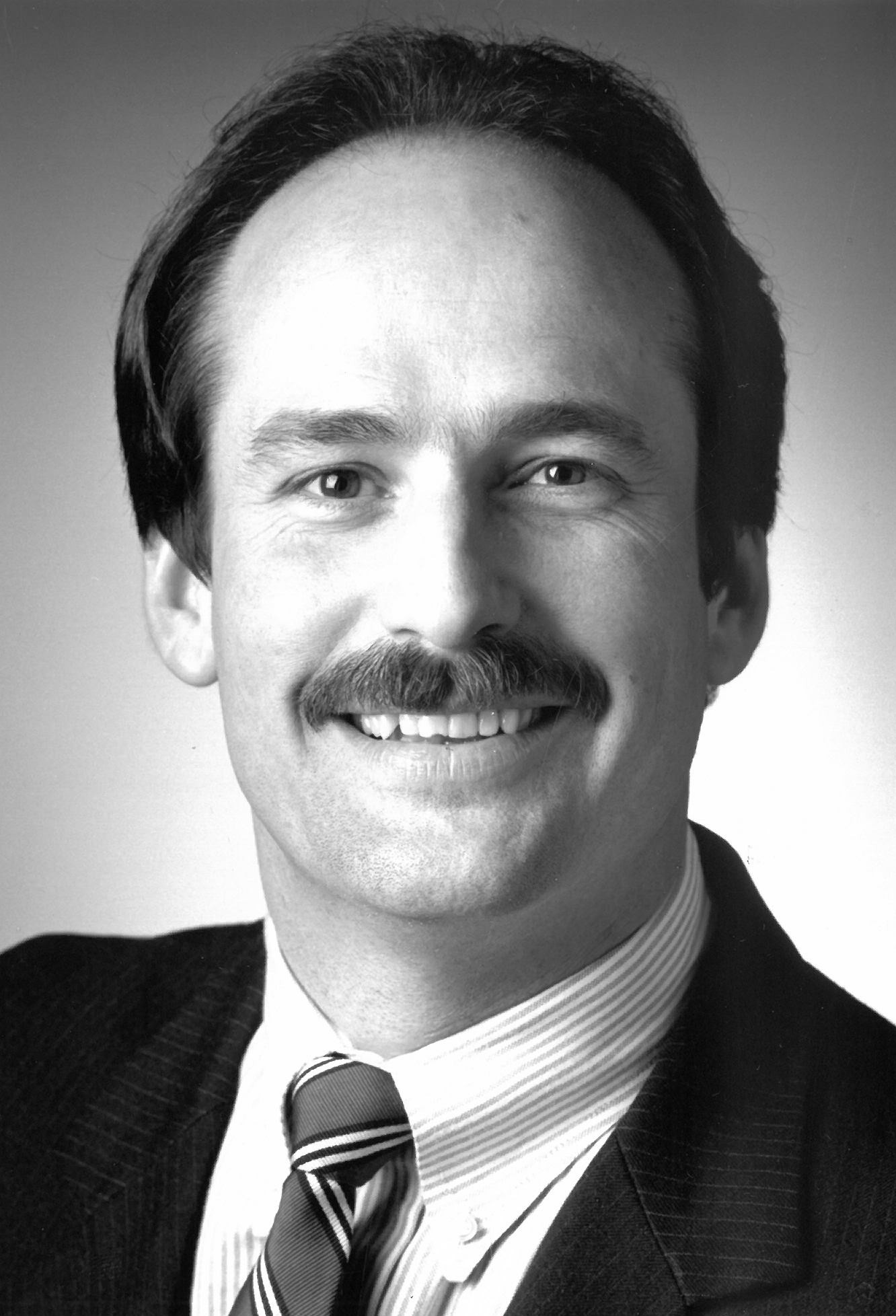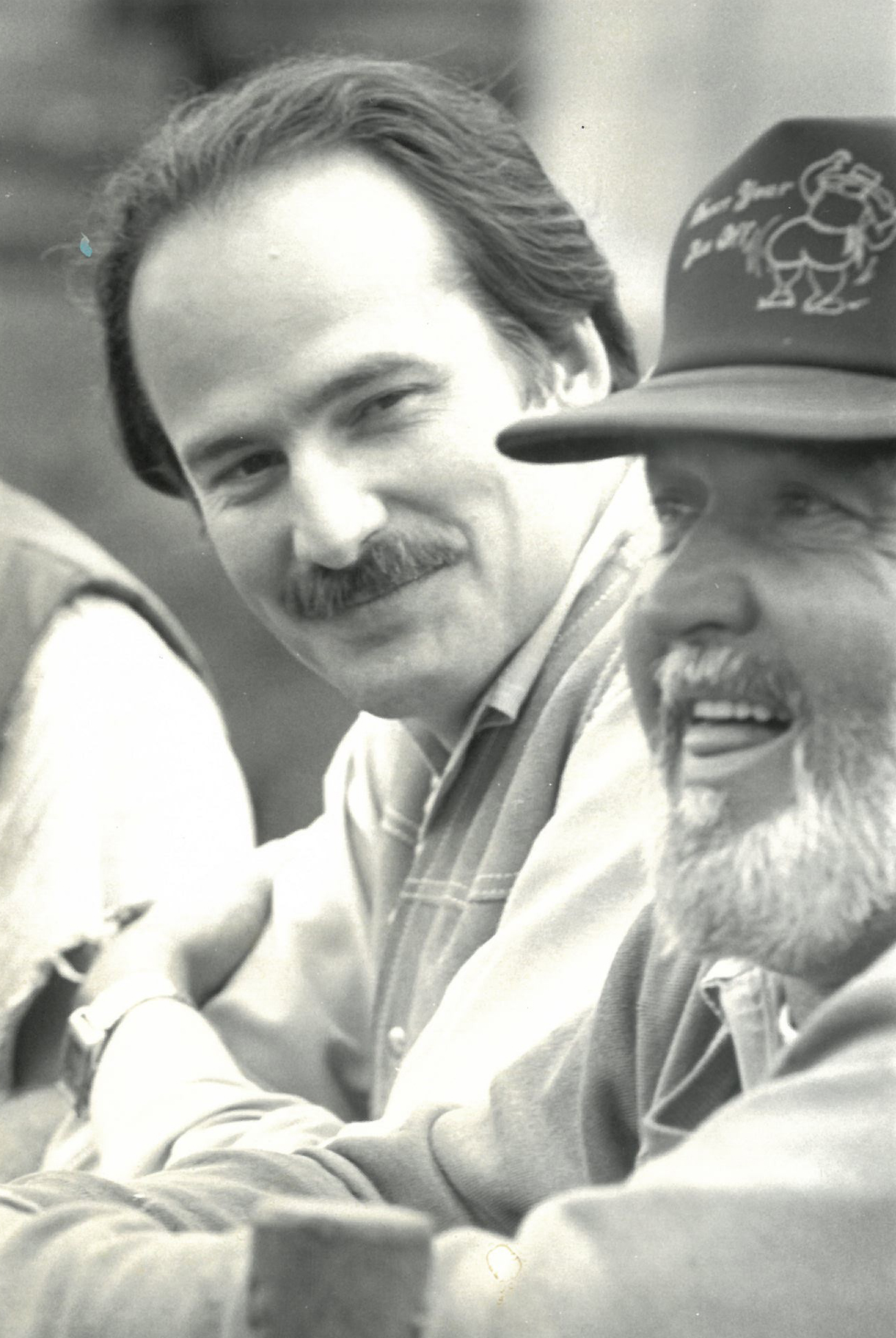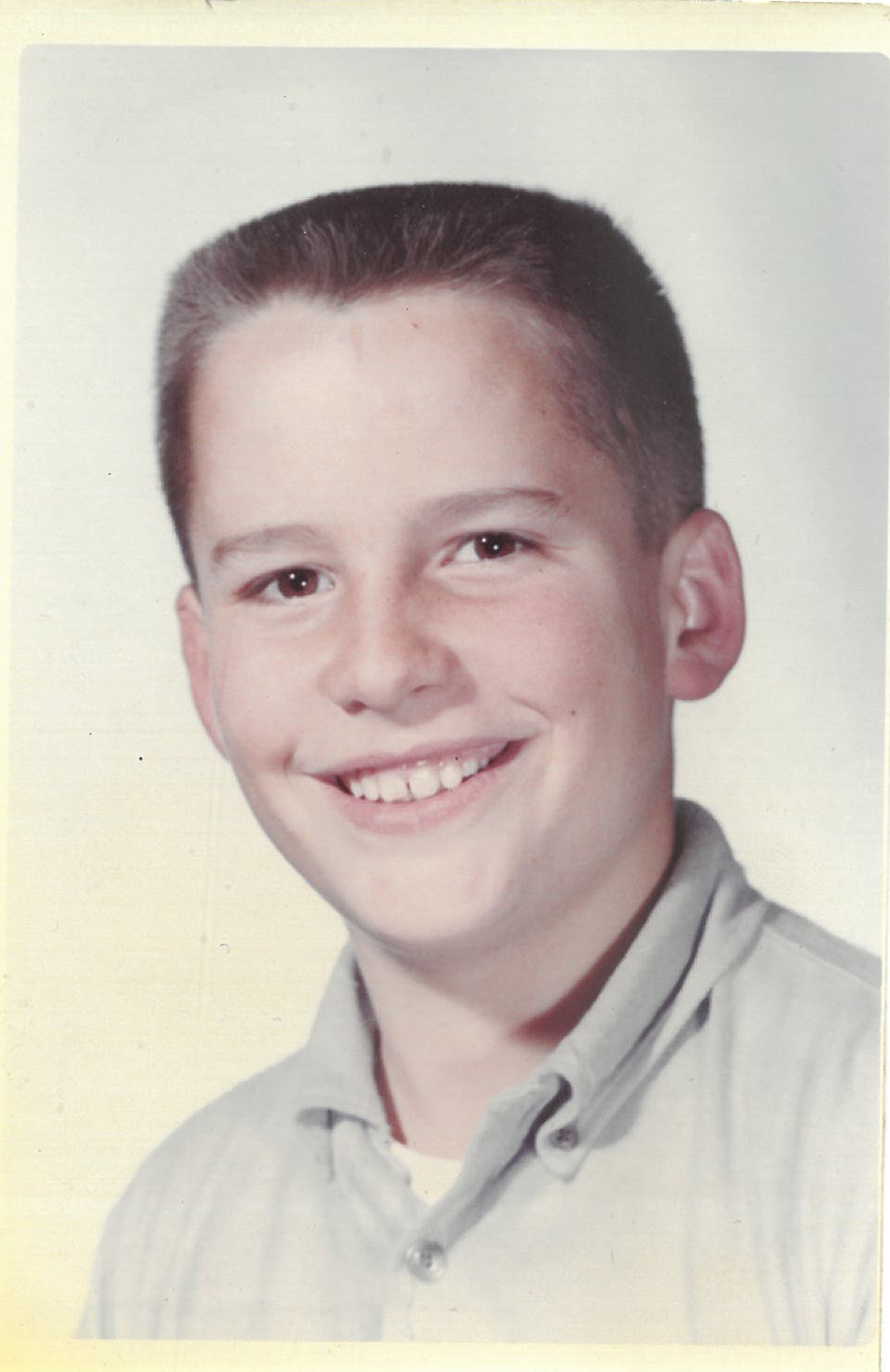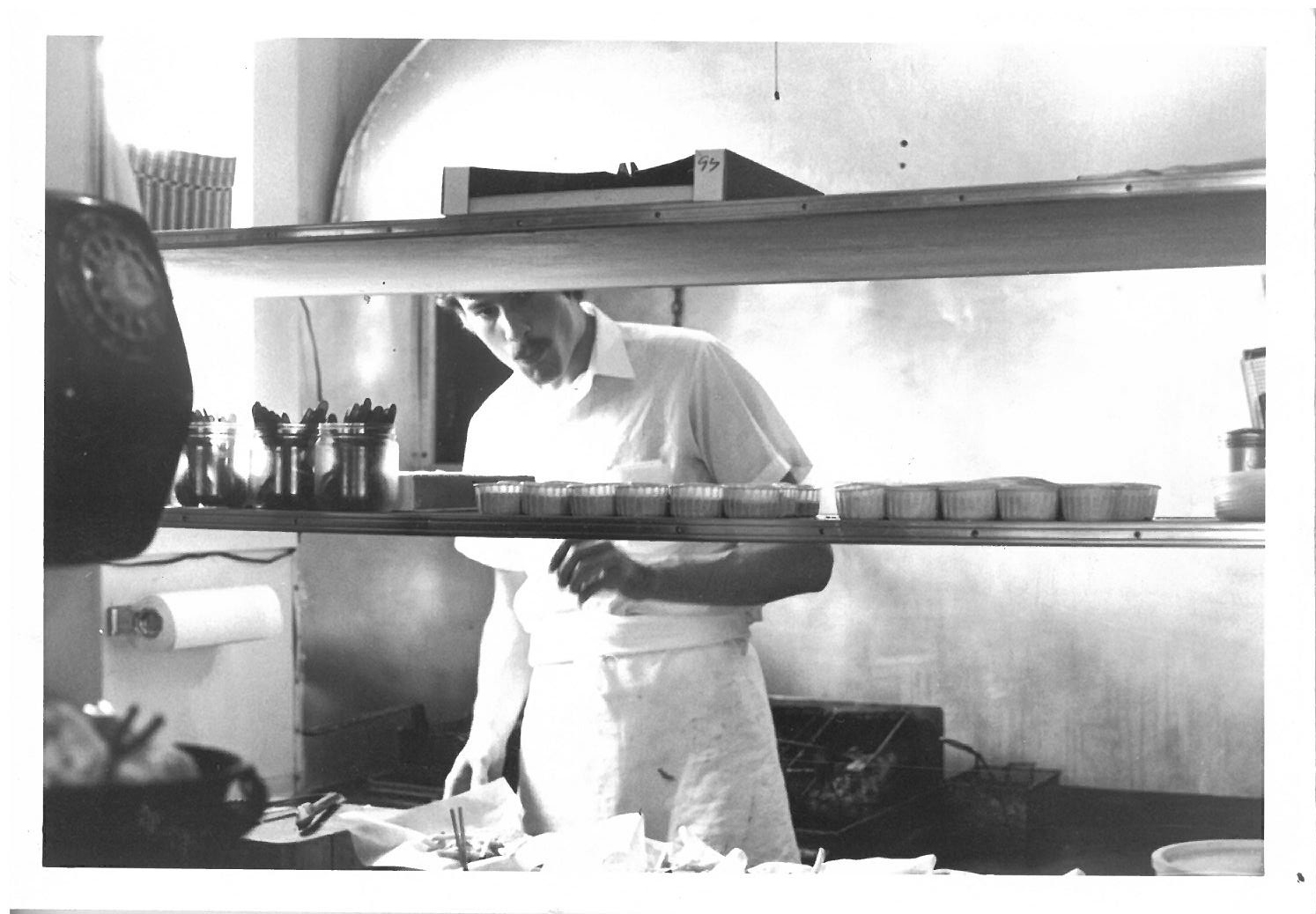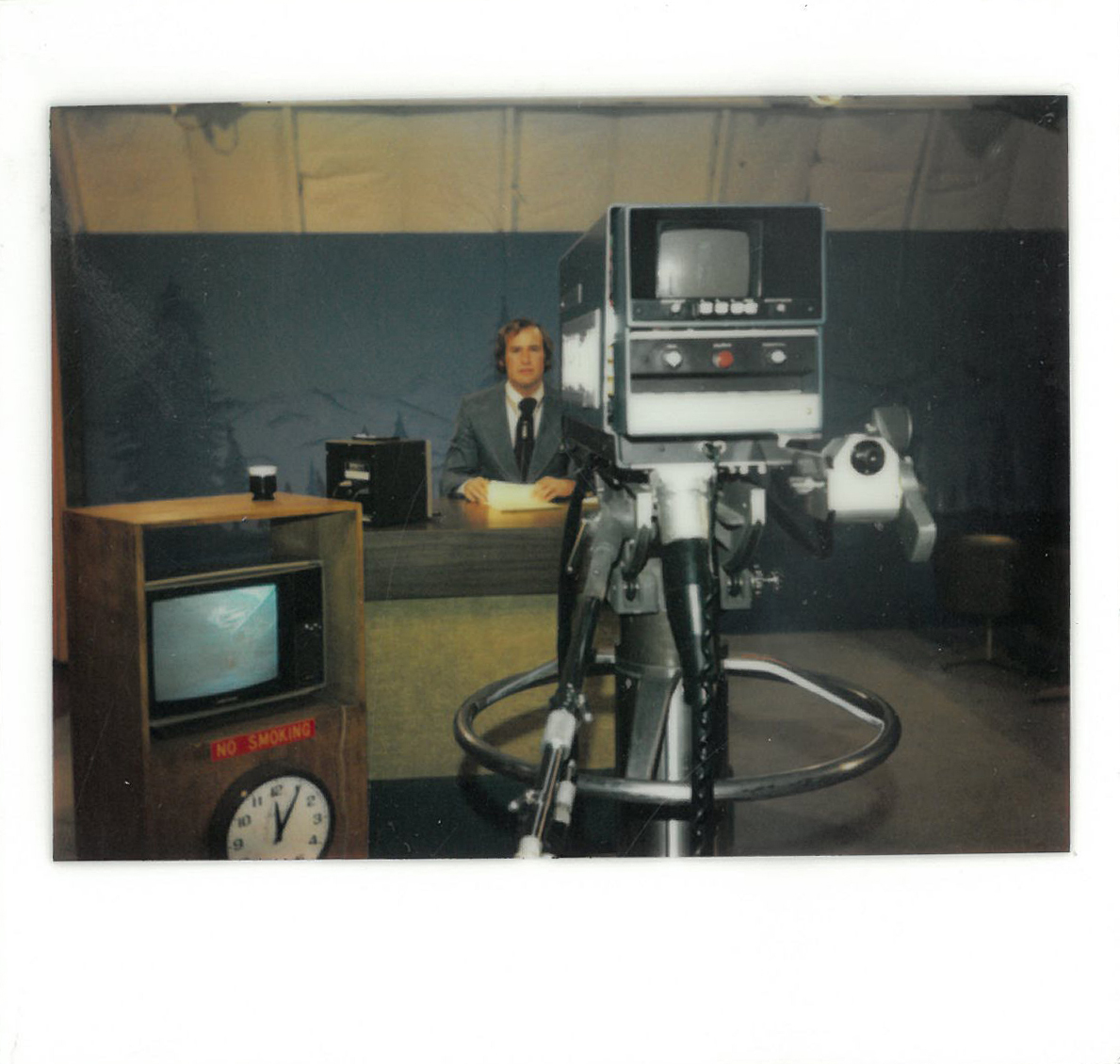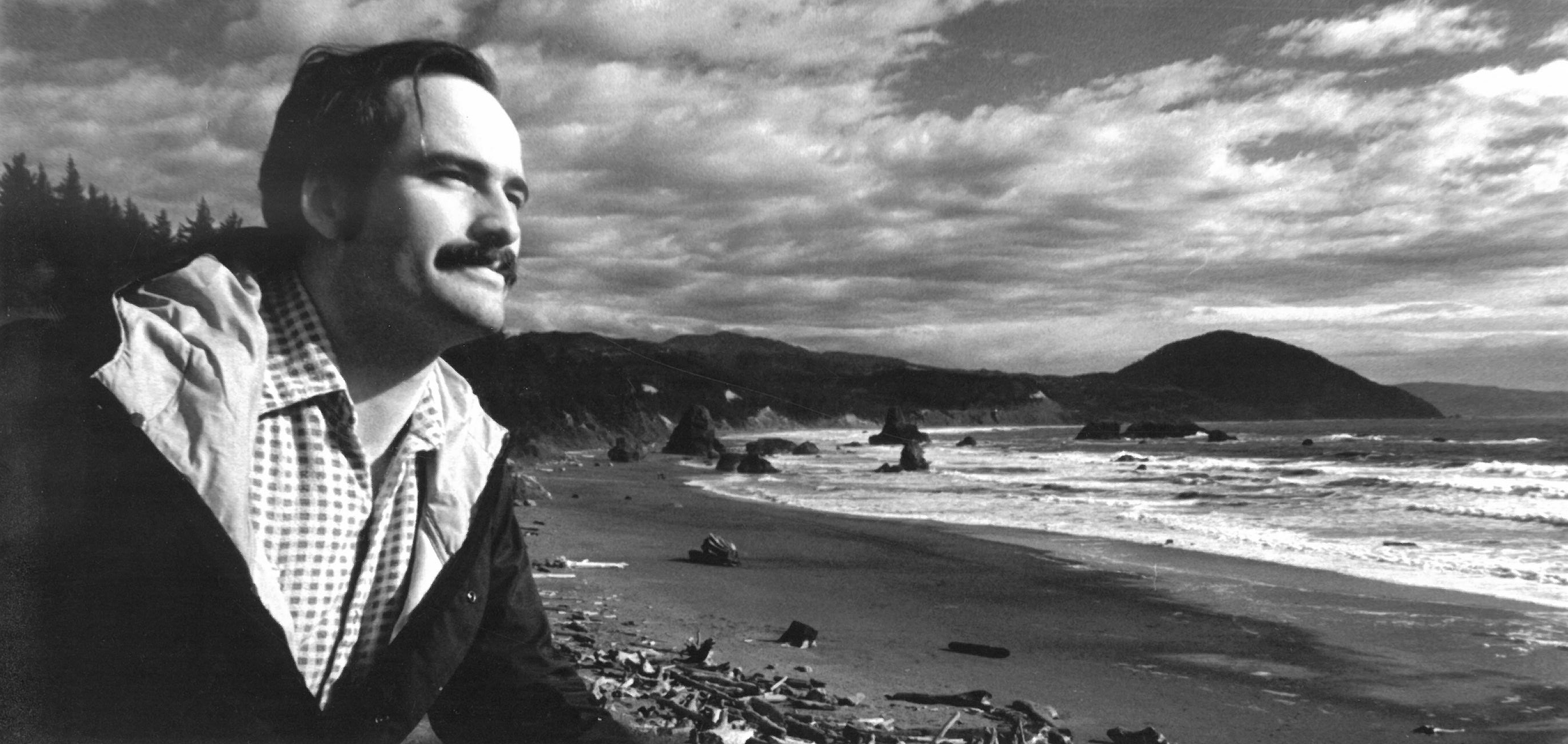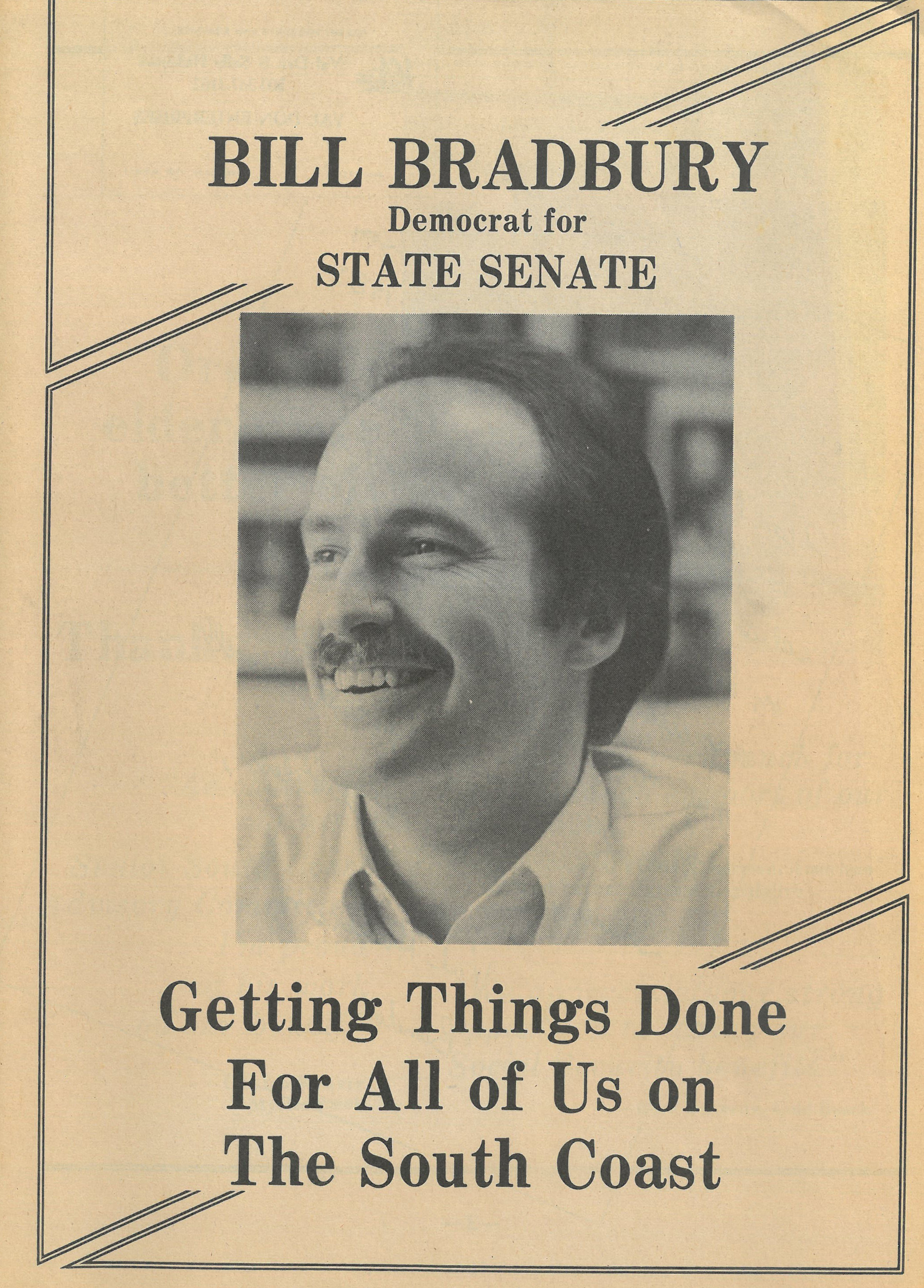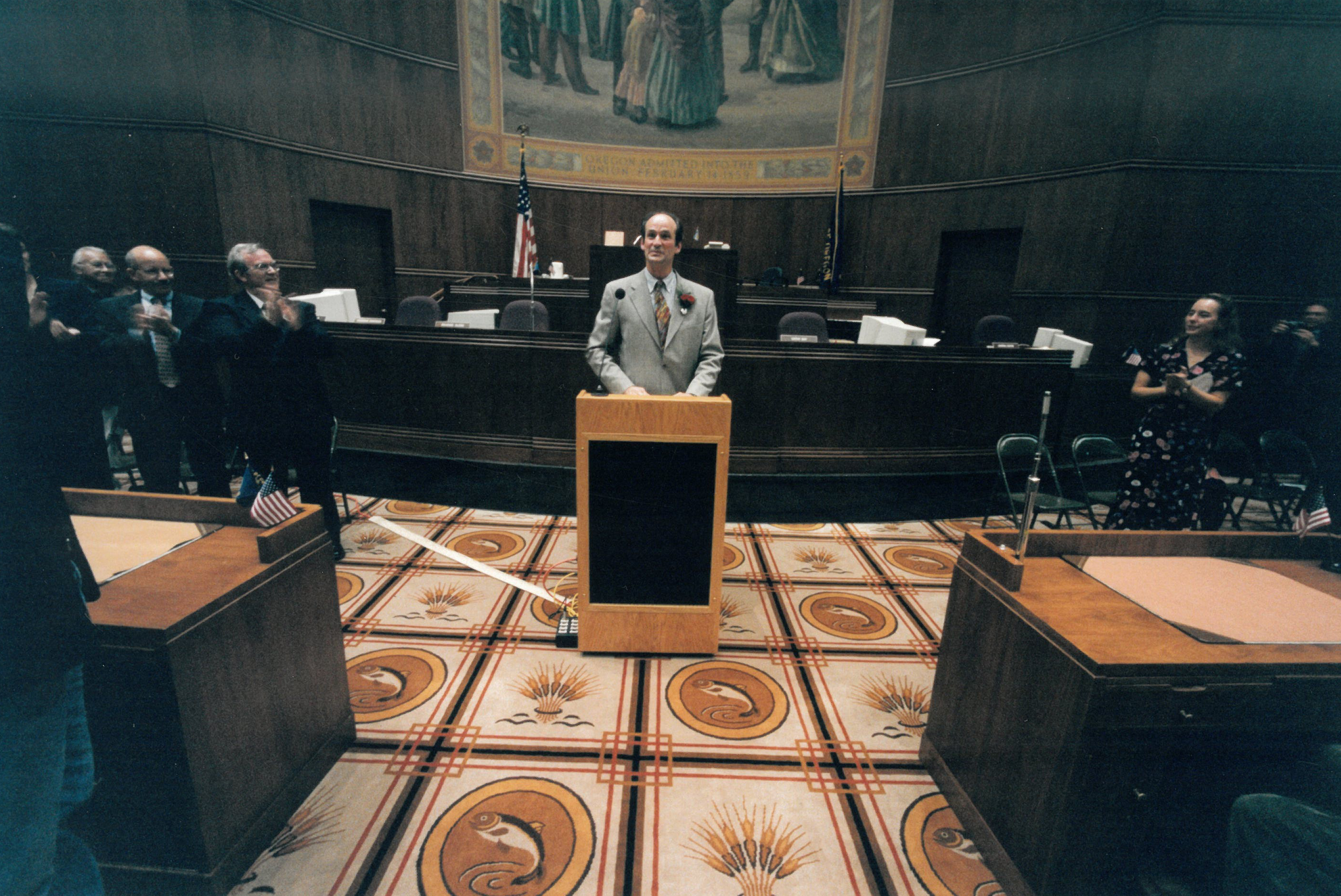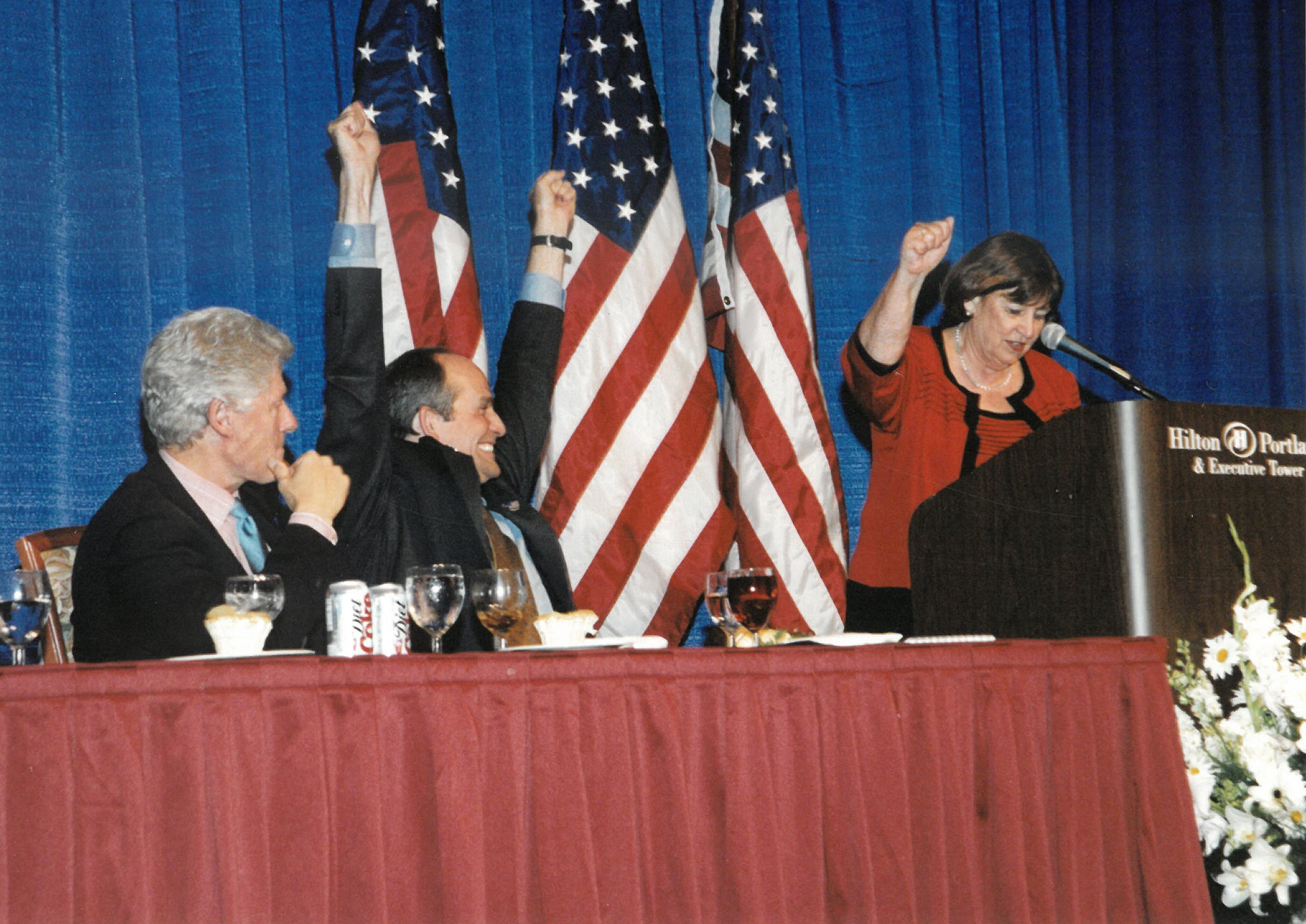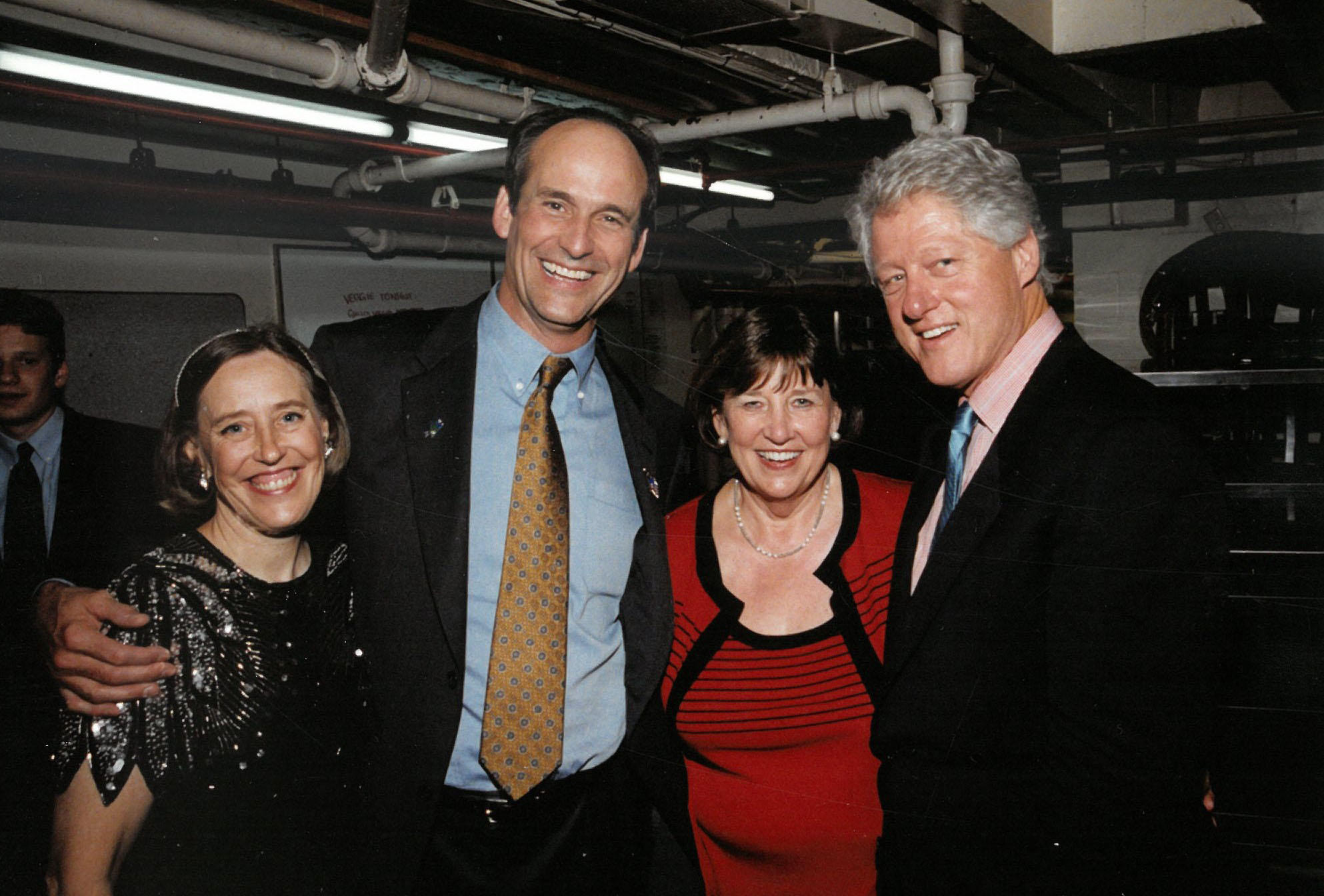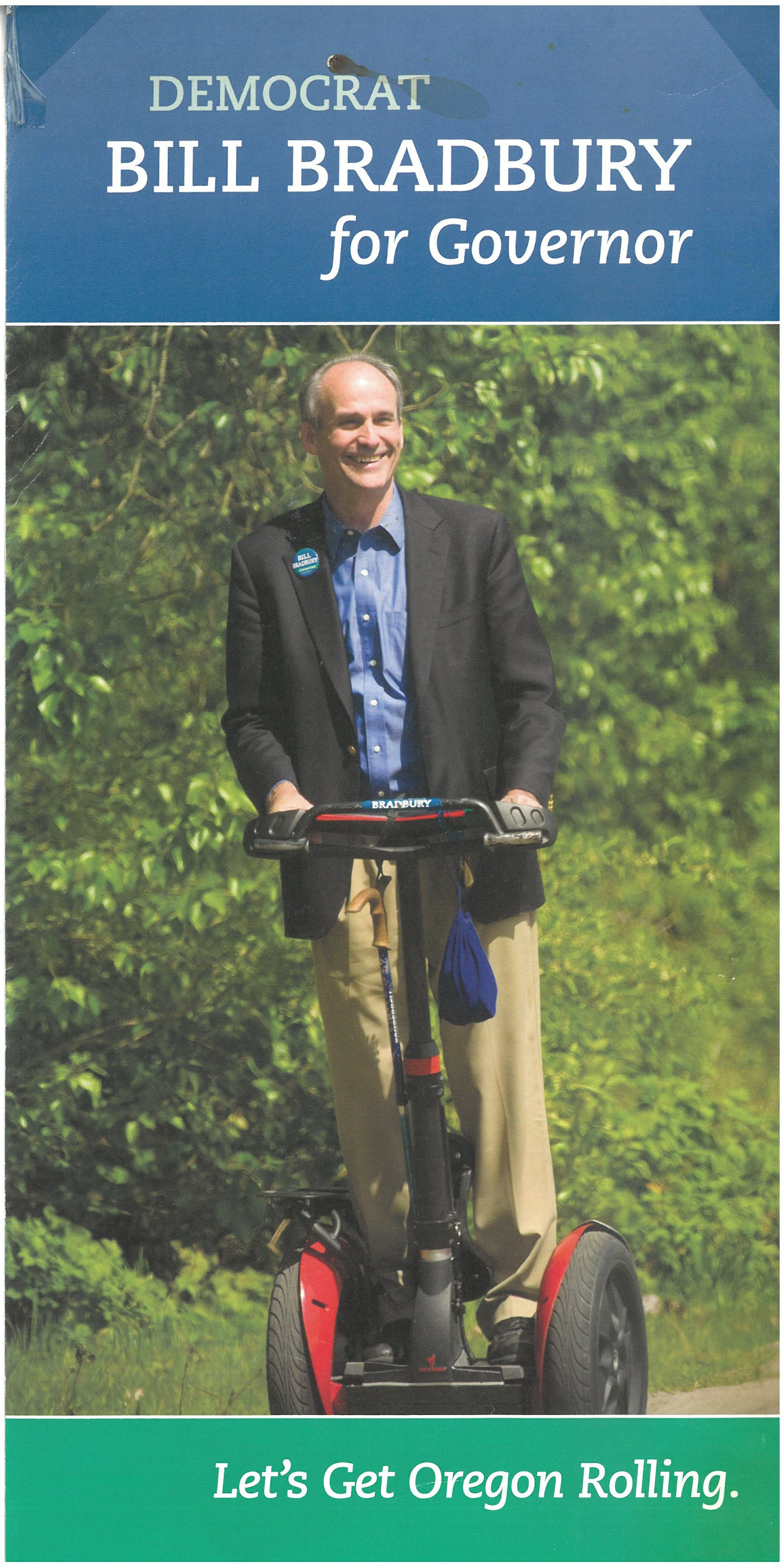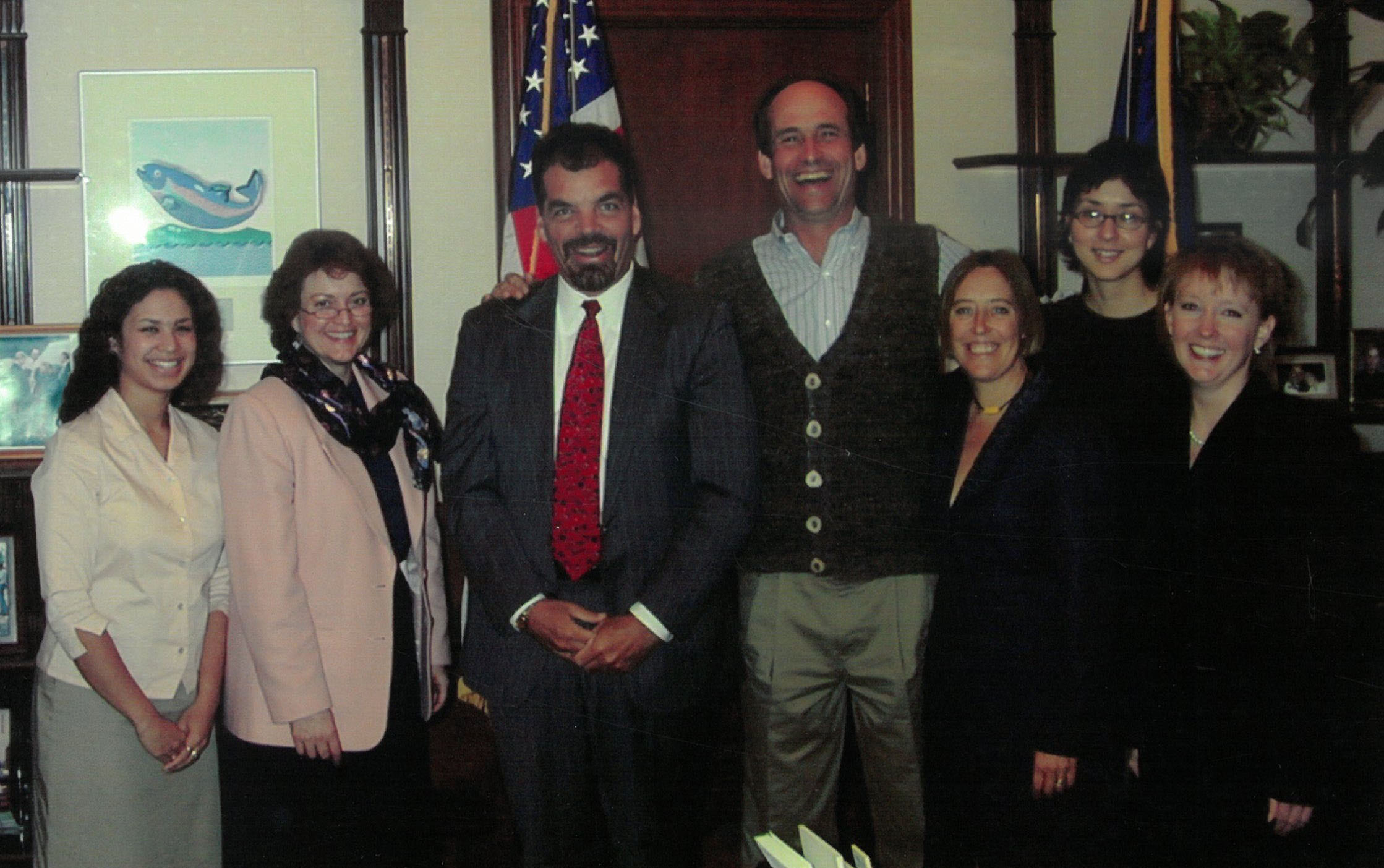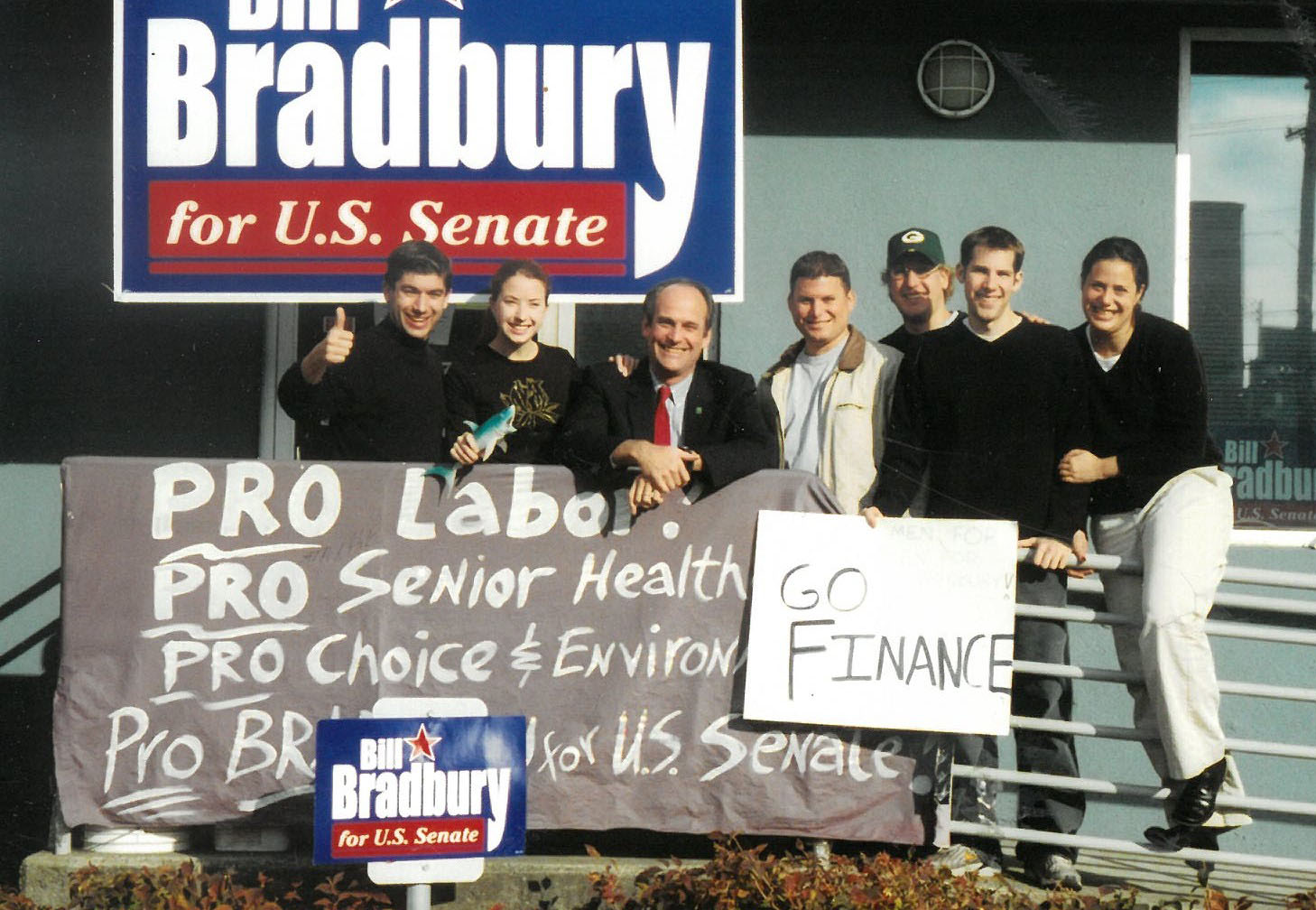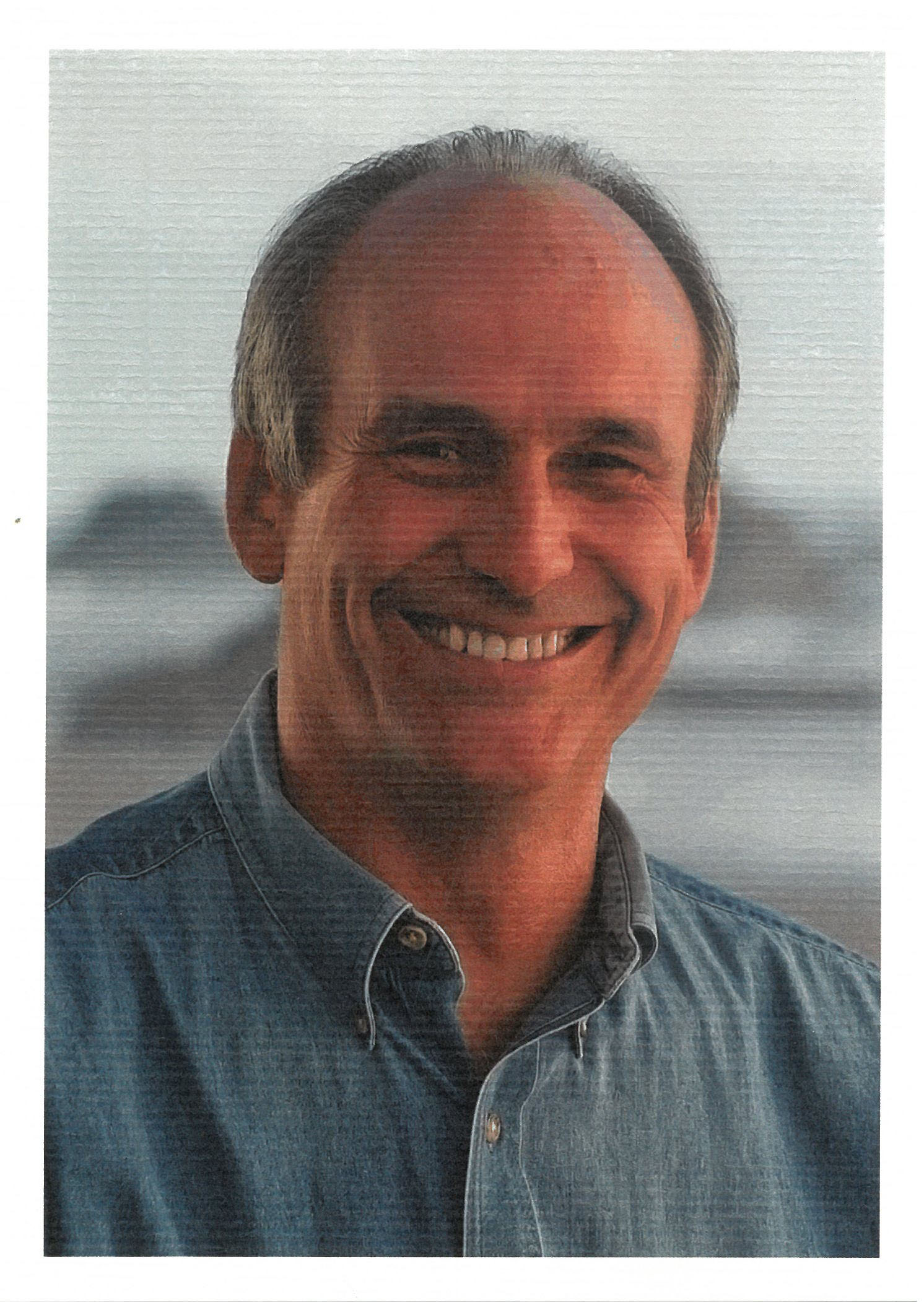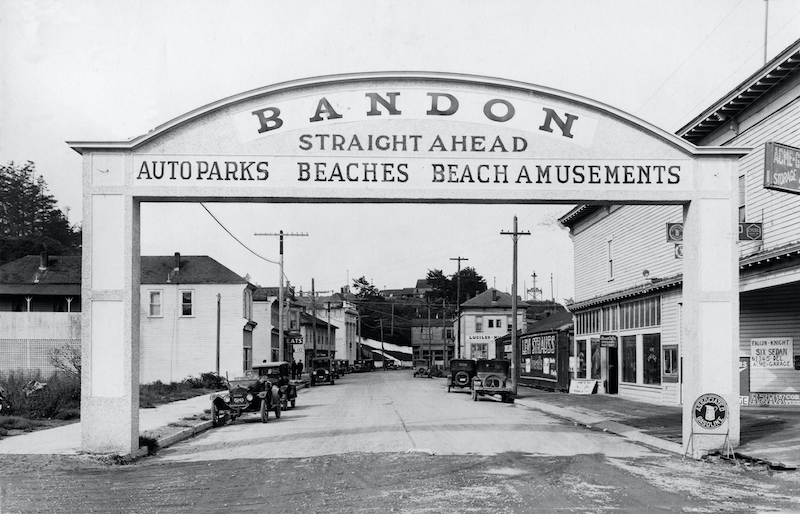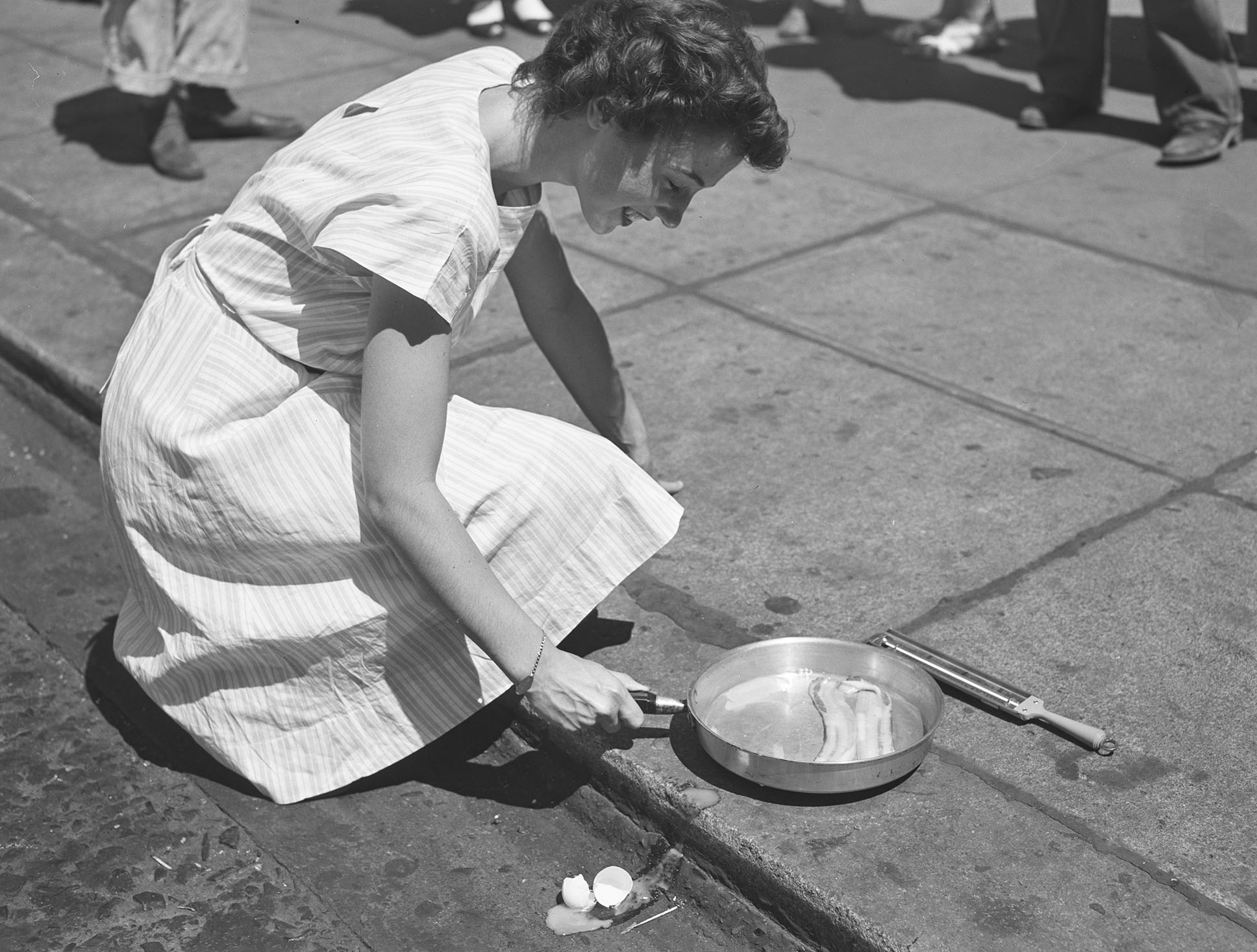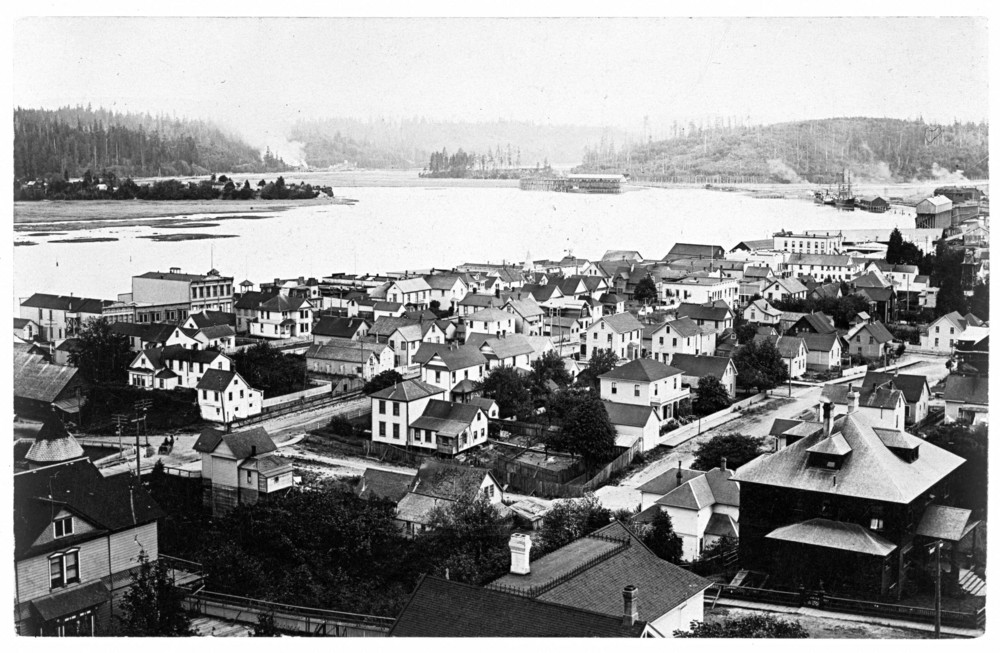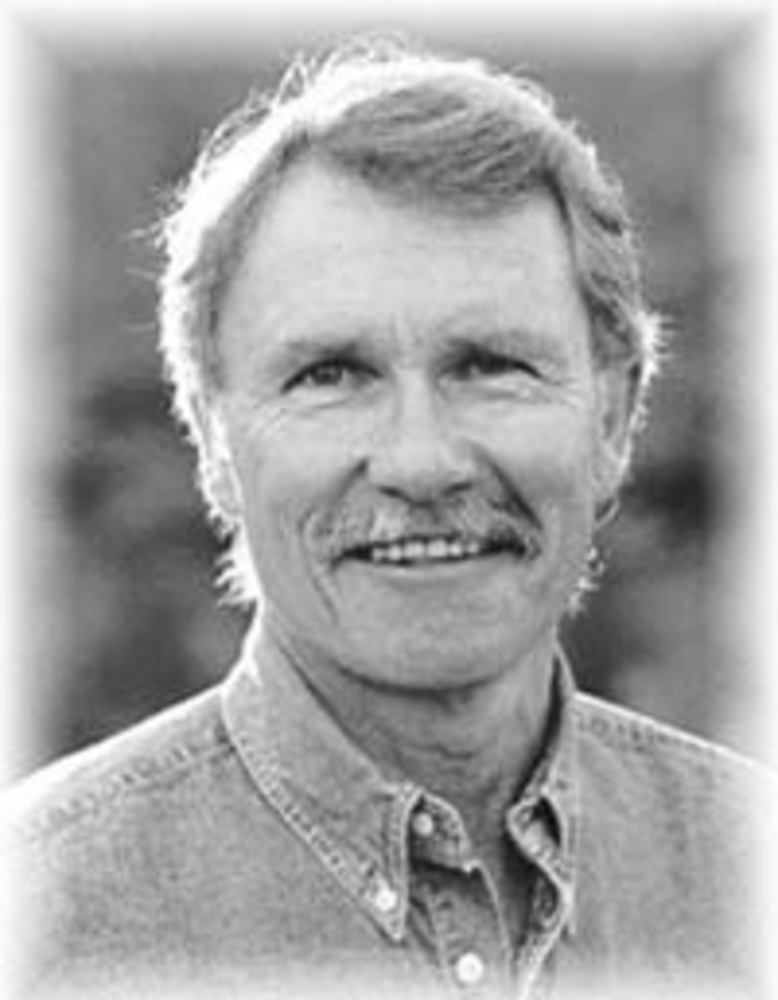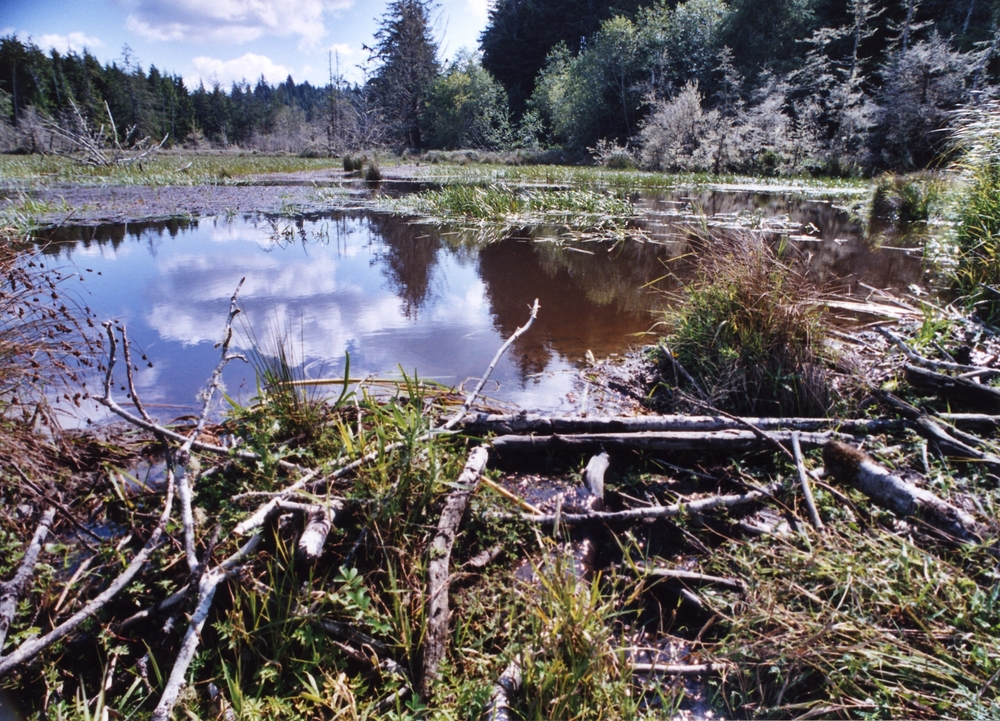William “Bill” Chapman Bradbury III served in Oregon politics and public affairs for more than thirty years. He began his civic career in the state legislature, first as a representative then as senator, followed by a decade as Oregon’s Secretary of State, which put him in charge of the state’s first vote-by-mail election. He is remembered as a tireless advocate for the environment and local economies, as well as for his hearty laugh, optimistic outlook, and respect for others.
William Bradbury was born on May 29, 1949, in Chicago, Illinois, to William and Lorraine Bradbury. He spent his early years in Chicago where his father was a professor of sociology at the University of Chicago. His socially conscious Quaker parents infused Bill and his sisters Katharine and Joan with Quaker ethics and democratic traditions. In August 1958, Bill, Kathy, and their parents were in a car crash in Montana in which both parents died and Bill was seriously injured. His maternal aunt and uncle, who were also Quakers, brought the kids to their home in Swarthmore, Pennsylvania. In August 1963, teenaged Bill and sister Joan were on the Capitol Mall in Washington, D.C., to hear Dr. Martin Luther King Jr. give his “I Have a Dream” speech. Although Bradbury rarely spoke of his religious beliefs, the democratic traditions of Quakerism—such as a commitment to social justice—likely influenced his public life.
Bradbury entered Antioch College (Ohio) in the fall of 1967 to study communications and media, a program that allowed him to intern with KQED-TV, a public television station in San Francisco. He became an on-air reporter in 1968 as part of the station’s “Newspaper of the Air.” He also became involved with “Optic Nerve,” a photography collective affiliated with Project One, a technological commune housed in a downtown warehouse. There he learned about using Sony’s new portable video technology that enabled television reporters to leave the studio. Immersed in the culture and creativity of San Francisco, Bradbury did not return to Antioch College as a student.
In early 1972, Bradbury moved to Bandon, Oregon, with friends to run a restaurant. He married one of his co-owners, Elizabeth “Betsy” Harrison; they would have two daughters. While there, he became interested in Coos County’s early efforts at zoning and land use planning and used his portable video equipment to produce a short black-and-white video that highlighted the environmental attributes of South Slough, an arm of Coos Bay threatened by housing development. The video brought the slough to the attention of state and federal officials and led to the designation in 1974 of the South Slough National Estuarine Research Reserve, the first such sanctuary in the nation. Bradbury’s other video programs about land use engaged local landowners. In 1976, he joined KCBY-TV in Coos Bay as a newsman, followed by stints at KVAL-TV in Eugene and KGW-TV in Portland in 1978. He formed his own video production company, Local Color, and produced a series of short videos featuring Oregon people and places.
Bradbury often felt empathy with the subjects of his videos and news reporting. After featuring a story on John Kitzhaber, a Roseburg physician who won a seat in the state legislature in 1979, Bradbury ran for public office. In early 1980, he returned to Bandon to campaign for an open legislative seat as a Democrat in a conservative rural district that spanned southern Coos and all of Curry Counties. He narrowly won his party’s nomination, but Republican voters, who knew him through his video and television work, favored him and he won the election by a wide margin.
Bradbury served two terms as state representative (1981–1985) and as state senator (1985–1995). He was a natural politician and highly regarded by his colleagues, who made him Senate Majority Leader in 1987 and Senate President in 1993-1994.
His legislative priorities reflected both the needs of his district and his political values. In his first House term, he sponsored legislation to create the Salmon-Trout Enhancement Program, which provides funds to landowners to restore fish habitat. In his second term, he successfully pushed legislation establishing small-business development centers in community colleges. In the state senate, he championed legislation that designated instream water rights for the public and for fish. And in 1987, he responded to constituents’ concerns over proposed federal leases for ocean oil and gas development by introducing legislation that created the Oregon Ocean Resources Management Program, the first such program in the country.
During his 1982 reelection campaign, Bradbury announced that he had multiple sclerosis. Although his symptoms affected his mobility, he was able to carry out his elective duties. In 1995, with Republicans in control of the state senate and his legislative proposals stymied, Bradbury resigned his seat to become executive director of the non-profit For the Sake of the Salmon, where he helped develop the Oregon Plan for Salmon and Watersheds. Divorced by then, he married Katy Eymann in 1987.
Governor John Kitzhaber appointed Bradbury as Secretary of State in November 1999 to replace Phil Keisling, who had resigned, and he was reelected in 2005. He served in that position until 2009, when he hit his term limit. He enthusiastically supported Vote-by-Mail and oversaw the creation of the Oregon Elections System for Tracking and Reporting (ORESTAR), an on-line program providing public access to campaign contributions. Throughout, he was an outspoken advocate for educating the public on the effects of climate change.
Bradbury ran unsuccessfully for the U.S. Senate in the 2002 general election against Gordon Smith. The country was rallying behind President George W. Bush after the attacks on the World Trade Center on September 11, 2001, and the election was seen as a referendum for sending U.S. troops into Iraq. Bradbury's instinct was to oppose an invasion, and he offered half-hearted support for the president. When he finally voiced his opposition to war, his position did not resonate with voters.
In the 2010 Democratic primary, Bradbury ran for governor. He knew that his friend (and former governor) John Kitzhaber was also likely to run, but he believed that the voters deserved to have a choice in the primary. He lost to Kitzhaber by a wide margin. Out-going Governor Ted Kulongoski appointed Bradbury to the Northwest Power and Conservation Council in 2010, where he continued his advocacy for energy conservation, reducing global warming, and the protection of fisheries—a lifelong dedication that earned him the nickname “Big Chinook” from Kitzhaber. He served as council chair in 2013-2014 and stepped down from his seat in 2018. Bradbury died on April 14, 2023.
-
![]()
Bill Bradbury.
Oregon Historical Society Research Library, Bill Bradbury Memorabilia, Coll.984
-
![]()
Bill Bradbury.
Oregon Historical Society Research Library, Bill Bradbury Memorabilia, Coll.984
-
![]()
Bill Bradbury's 6th grade photo.
Oregon Historical Society Research Library, Bill Bradbury Memorabilia, Coll.984, Folder 1
-
![]()
Bill Bradbury working at the Two Seasons restaurant in Bandon, Oregon, early 1970s.
Oregon Historical Society Research Library, Bill Bradbury Memorabilia, Coll.984, Folder 2
-
![]()
Bradbury working as a local news anchor, 1978.
Oregon Historical Society Research Library, Bill Bradbury Memorabilia, Coll.984, Folder 3
-
![]()
Photograph of Bradbury used for campaign literature, 1980.
Oregon Historical Society Research Library, Bill Bradbury Memorabilia, Coll.984, Folder 4
-
![]()
Bradbury election pamphlet, 1983.
Oregon Historical Society Research Library, Bill Bradbury Memorabilia, Coll.984, Folder 6
-
![]()
Bradbury as Oregon Senate President, 1993.
Oregon Historical Society Research Library, Bill Bradbury Memorabilia, Coll.984, Folder 5
-
![]()
Bradbury with President Clinton and Darlene Hooley at the Portland Forest Conference, 1993.
Oregon Historical Society Research Library, Bill Bradbury Memorabilia, Coll.984, Folder 8
-
![]()
Bradbury with his wife, Katy Eymann (on his left), Darlene Hooley, and President Clinton at the Northwest Forest Conference in Portland, 1993.
Oregon Historical Society Research Library, Bill Bradbury Memorabilia, Coll.984, Folder 8
-
![]()
Bradbury campaign literature during his run for U.S Senator, 2002.
Oregon Historical Society Research Library, Bill Bradbury Memorabilia, Coll.984
-
![]()
Bradbury campaign literature during his run for U.S. Senator, 2002.
Oregon Historical Society Research Library, Bill Bradbury Memorabilia, Coll.984
-
![]()
Bradbury campaign literature during his run for Oregon Governor, 2010.
Oregon Historical Society Research Library, Bill Bradbury Memorabilia, Coll.984
-
![]()
Bradbury campaign literature during his run for Oregon Governor, 2010.
Oregon Historical Society Research Library, Bill Bradbury Memorabilia, Coll.984
-
![]()
Bradbury as Secretary of State with his staff, 2001.
Oregon Historical Society Research Library, Bill Bradbury Memorabilia, Coll.984, Folder 10
-
![]()
Bradbury with staff during his run for a seat in the U.S. Senate, 2002.
Oregon Historical Society Research Library, Bill Bradbury Memorabilia, Coll.984
-
![]()
Photo of Bill Bradbury from his memorial service program, 2023.
Oregon Historical Society Research Library, Bill Bradbury Memorabilia, Coll.984, Folder 12
Related Entries
-
![Bandon]()
Bandon
Located at the mouth of the Coquille River in Coos County, Oregon, Band…
-
![Climate Change in Oregon]()
Climate Change in Oregon
Within a few hundred miles in Oregon, you can see snowy volcanoes, parc…
-
![Coos Bay]()
Coos Bay
The Coos Bay estuary is a semi-enclosed, elongated series of sloughs an…
-
![John Kitzhaber (1947-)]()
John Kitzhaber (1947-)
John Kitzhaber, Oregon’s governor from 1995 to 2003, was born in 1947 a…
-
South Slough National Estuarine Research Reserve
The South Slough National Estuarine Research Reserve (SSNERR)—an elemen…
Map This on the Oregon History WayFinder
The Oregon History Wayfinder is an interactive map that identifies significant places, people, and events in Oregon history.
Further Reading
Bailey, Robert. "Bill Bradbury: An Oregon Story (Part 1)." Open Spaces: Views from the Northwest, 2024.
Cook, Emily Cureton. "Former Oregon Secretary of State Bill Bradbury remembered for as lasting legacy." Oregon Public Broadcasting, April 15, 2023.

